Water and Agriculture in 2050
Water is the foundation of life, sustaining ecosystems, supporting human survival, and driving economic development. Among its many essential roles, agriculture remains the largest consumer of freshwater, accounting for nearly 70% of global water use. However, as we approach 2050, a looming water crisis threatens to upend this delicate balance, putting food security, livelihoods, and global stability at risk.
This issue is the result of a number of important elements coming together: unsustainable consumption practices are depleting vital water sources, climate change is deepening droughts and changing rainfall patterns, and rapid population increase is raising the demand for food and water. The World Resources Institute predicts that many regions—particularly arid and heavily populated areas—will face severe water stress, which means that their water supplies won’t be enough to fulfill demand.
For agriculture, this spells a dire warning. Water shortages will reduce irrigation capacity, lower crop yields, and disrupt food supply chains, leading to rising food prices and economic instability. Countries heavily reliant on agriculture will be particularly vulnerable, with rural communities facing displacement, increased poverty, and food scarcity.
In this article we delves into the risks, realities, and resilience strategies necessary to confront the water-agriculture crisis of 2050. By understanding the scope of the challenge and exploring innovative solutions, we can work toward a more sustainable and water-secure future.
Understanding Water Stress
Water stress is a critical issue that arises when the demand for water surpasses the available supply. It is quantified by assessing the proportion of water used for three primary sectors—agriculture, industry, and domestic purposes—relative to the total water resources in a region. When this ratio is high, it indicates that a significant portion of available water is being consumed, leaving little room for sustainability or future needs.
By 2050, climate change is expected to intensify water stress globally. Rising temperatures will increase evaporation rates, while erratic rainfall patterns will disrupt traditional water cycles, leading to prolonged droughts in some areas and unpredictable flooding in others. These changes will significantly reduce water availability, particularly in regions already grappling with scarcity.
Countries classified as having high or extremely high water stress will face immense challenges in meeting the water demands of their populations. This scarcity will trigger a domino effect, impacting key areas such as food production, economic growth, and social stability. For instance, agriculture, which accounts for the largest share of global water use, will suffer from reduced irrigation capacity, leading to lower crop yields and food shortages. Industries reliant on water, such as manufacturing and energy production, will face operational disruptions, while communities will struggle with inadequate access to clean water for drinking and sanitation.
In essence, water stress is not just an environmental issue—it is a multifaceted challenge that threatens the very foundations of human well-being and economic prosperity. Addressing it requires a comprehensive understanding of its causes and consequences, as well as proactive measures to ensure sustainable water management for the future.
Global Water Stress Levels in 2050
Comprehensive global analysis projects that by 2050, countries will fall into five distinct categories of water stress, each reflecting the severity of water scarcity and the challenges they will face. These categories highlight the uneven distribution of water resources and the varying degrees of vulnerability across the world. Here’s a detailed breakdown:
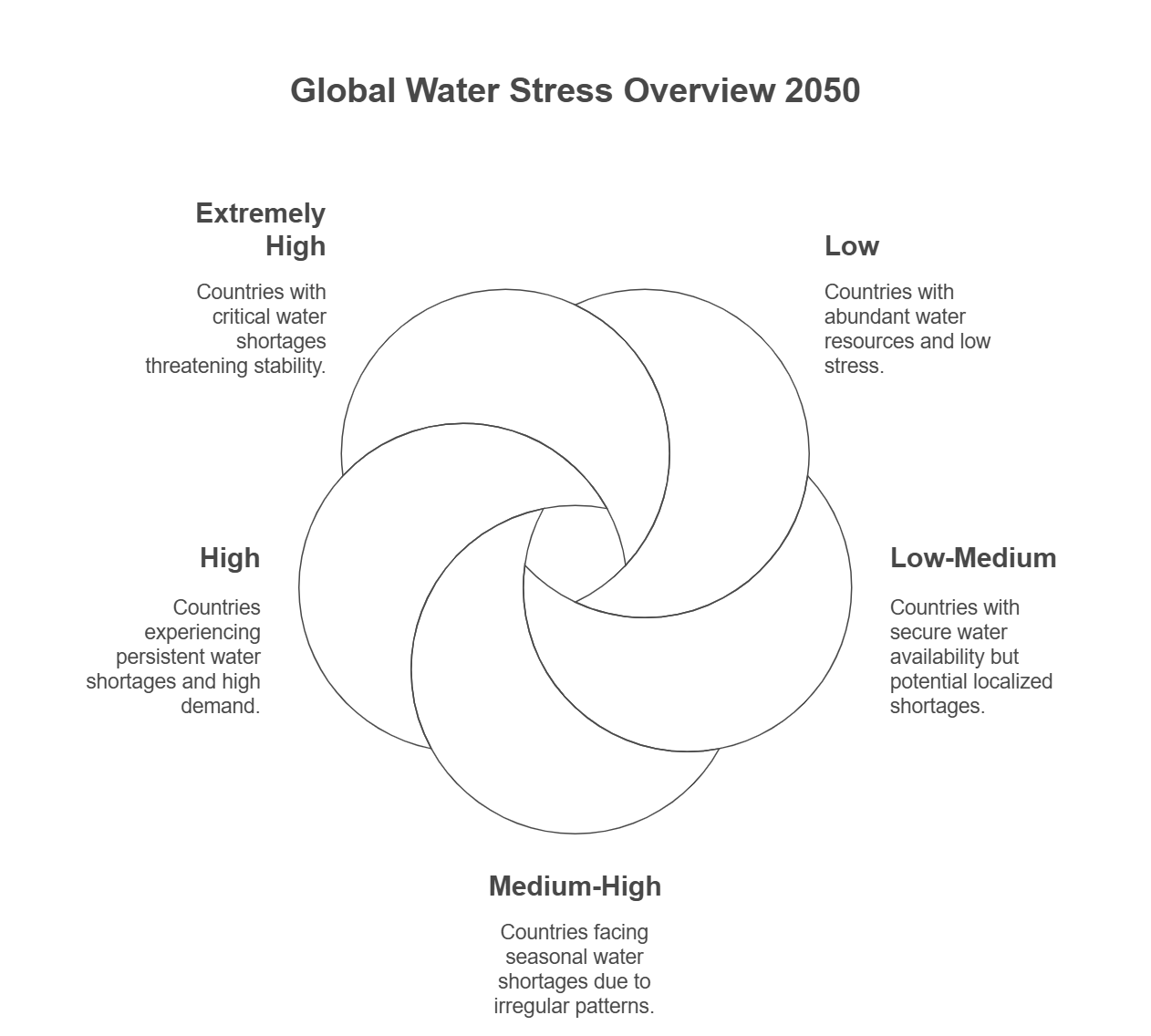
Low (48 countries)
These areas are extremely unlikely to face severe water shortages because they are endowed with an abundance of water resources. These nations usually enjoy the advantages of strong natural water systems, such as regular rainfall, large river basins, or significant groundwater supplies. They are therefore well-positioned to satisfy their economies’ and populations’ water needs without experiencing significant strain. Iceland, Norway, Ireland, Colombia, Nicaragua, and the Democratic Republic of the Congo (DRC) are a few examples of such nations. Because of their advantageous geographic and climatic circumstances, these countries are role models for water security.
Low-Medium (38 countries)
These nations enjoy relatively secure water availability but are not entirely free from challenges. Localized water scarcity can arise in specific areas, especially during dry seasons or in regions with uneven water distribution. To address these potential gaps, these countries must carefully monitor their water usage and invest in infrastructure improvements. Examples of such nations include Canada, Russia, Brazil, the United Kingdom, Japan, Sudan, and Ecuador, among others. While they are not at immediate risk of widespread water stress, proactive measures will be essential to maintain their water security in the face of growing demands and climate variability.
Medium-High (27 countries)
Countries in this category will face seasonal water shortages, primarily due to irregular rainfall patterns, increasing demand, and overuse of water resources. To address these challenges, nations must implement sustainable water management strategies, including advanced irrigation techniques, rainwater harvesting, and efficient distribution systems. Without proactive measures, water scarcity could disrupt agriculture, industry, and daily life. Countries such as Nepal, the USA, China, the Philippines, Angola, and Sri Lanka will need to prioritize long-term water conservation efforts to ensure a stable and reliable water supply.
High (22 countries)
Countries in this category will experience persistent water shortages, where demand consistently exceeds available supply. Without major intervention, these nations will struggle to provide adequate water for their populations, industries, and agricultural sectors. To mitigate this crisis, they must adopt large-scale water recycling, desalination technologies, and enforce strict water conservation policies. Proactive management will be essential to prevent severe economic and humanitarian consequences. Countries facing high water stress include Mongolia, Turkey, Peru, Mexico, and Australia.
Extremely High (29 countries)
Countries in this category confront the most severe water challenges, with critical shortages threatening their economic stability, agricultural output, and social well-being. Prolonged droughts, over-extraction of groundwater, and the escalating impacts of climate change are expected to exacerbate the crisis. Without immediate and innovative interventions, these nations risk widespread food insecurity, economic decline, and humanitarian emergencies. Urgent actions—such as international collaboration, advanced water conservation technologies, and large-scale desalination projects—will be vital for their survival.
Regions Facing Extremely High Water Stress
Certain regions are particularly vulnerable to water scarcity by 2050:
a). The Middle East and North Africa (MENA)
- Countries: Saudi Arabia, Iran, Libya, Algeria, Sudan.
- Causes: Arid climate, limited groundwater recharge, and heavy reliance on desalination.
- Impact: Reduced agricultural productivity, increased dependence on food imports, and heightened risk of water-related conflicts.
b). South Asia
- Countries: India, Pakistan.
- Causes: High population density, excessive groundwater extraction, and unpredictable monsoon patterns.
- Impact: Declining crop yields, urban water shortages, and significant economic strain.
c). Europe’s Unexpected Crisis – Belgium
- Belgium is the only Northern European country projected to face extreme water stress, driven by high industrial and agricultural water demands.
d). Latin America – Chile’s Longstanding Drought
- Chile has been grappling with a severe drought for over a decade, worsened by reduced snowfall in the Andes, which has led to chronic water shortages.
e). Southern Africa
- Countries: Namibia, South Africa, Angola.
- Causes: Shifting rainfall patterns and rising temperatures due to climate change.
Implications of Water Stress Levels
The categorization of countries into these five levels underscores the growing disparity in water availability across the globe. While some regions remain relatively unaffected, others will face severe challenges that could destabilize economies, disrupt food systems, and exacerbate social inequalities. The countries in the “High” and “Extremely High” categories, in particular, will need to prioritize water security through immediate and long-term strategies.
This global analysis serves as a wake-up call, emphasizing the need for collective action to address water stress. By understanding these projections, policymakers, industries, and communities can work together to implement sustainable water management practices, invest in resilient infrastructure, and foster international collaboration to ensure a water-secure future for all.
Also Read About: 7 way to reduce green house gas emission from rice farming.
Why This Matters: The Economic and Social Impact
Water scarcity is not just an environmental issue—it is a multifaceted crisis with profound economic and social implications. As water becomes increasingly scarce, its far-reaching consequences will disrupt key sectors, strain public health systems, and even ignite conflicts. Here’s a closer look at how water scarcity will impact our world:
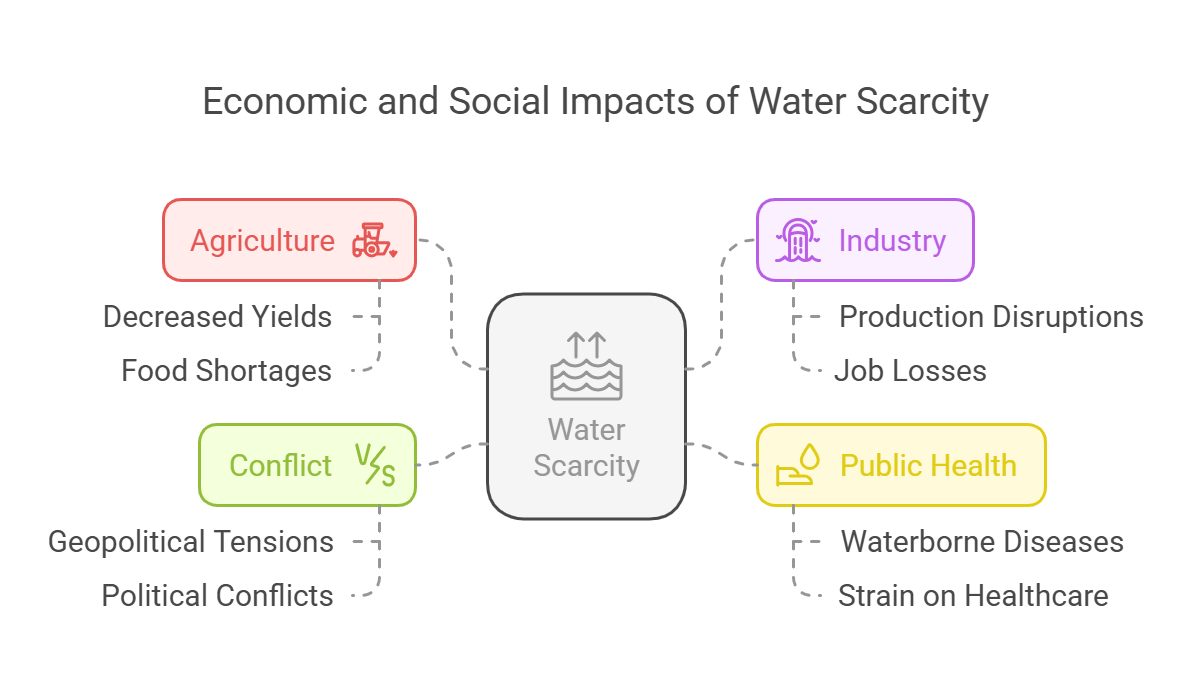
Agriculture
Approximately 70% of water use worldwide is attributed to agriculture, making it the largest consumer of freshwater. Millions of people’s access to food will be threatened by decreased agricultural yields brought on by reduced irrigation capacity brought on by water constraints. Water-stressed farmers will find it difficult to produce enough food, which might lead to shortages, price increases, and a greater need on imports. Vulnerable groups may be disproportionately impacted, which would worsen hunger and malnutrition.
Industry
Water-intensive industries, such as textiles, mining, energy production, and manufacturing, will face significant challenges. Reduced water availability will disrupt production processes, increase operational costs, and potentially lead to job losses. For example, the textile industry, which relies heavily on water for dyeing and processing, may experience supply chain disruptions, while mining operations could be forced to scale back due to insufficient water for extraction and processing.
Public Health
Access to clean water is fundamental for sanitation, hygiene, and overall public health. Water scarcity will compromise sanitation systems, increasing the risk of waterborne diseases such as cholera, dysentery, and typhoid. Communities without reliable access to clean water will face higher rates of illness, placing additional strain on healthcare systems. Women and children, who often bear the burden of collecting water, will be particularly affected, as they may have to travel longer distances to secure water, impacting their education and livelihoods.
Conflict
Water scarcity has the potential to fuel geopolitical tensions and disputes over shared water resources. Rivers, lakes, and aquifers that cross national borders—such as the Nile, Indus, and Mekong—could become flashpoints for conflict as countries compete for dwindling supplies. Historical examples, such as tensions over the Jordan River Basin, demonstrate how water scarcity can escalate into political and even military confrontations. In regions already facing instability, water shortages could exacerbate existing conflicts, creating a vicious cycle of resource competition and social unrest.
The Broader Implications
Water scarcity’s social and economic effects are intertwined, potentially destabilizing entire towns and countries. For example, falling agricultural output may cause food prices to rise, which may then cause migration and social unrest. Similar to this, economic downturns brought on by industrial disruptions may make it harder for governments to fund public health and water infrastructure.
A comprehensive strategy that strikes a balance between short-term demands and long-term sustainability is needed to address water scarcity. We can lessen these effects and create a more resilient future by making investments in water-efficient technologies, enhancing water management techniques, and encouraging global collaboration. Although the stakes are tremendous, we can reverse this global disaster if we work together.
Solutions: Can We Prevent a Water Crisis?
Although the global water crisis poses significant challenges, a combination of innovative strategies and collaborative efforts can help mitigate its impacts. Below are key measures that could avert this crisis:
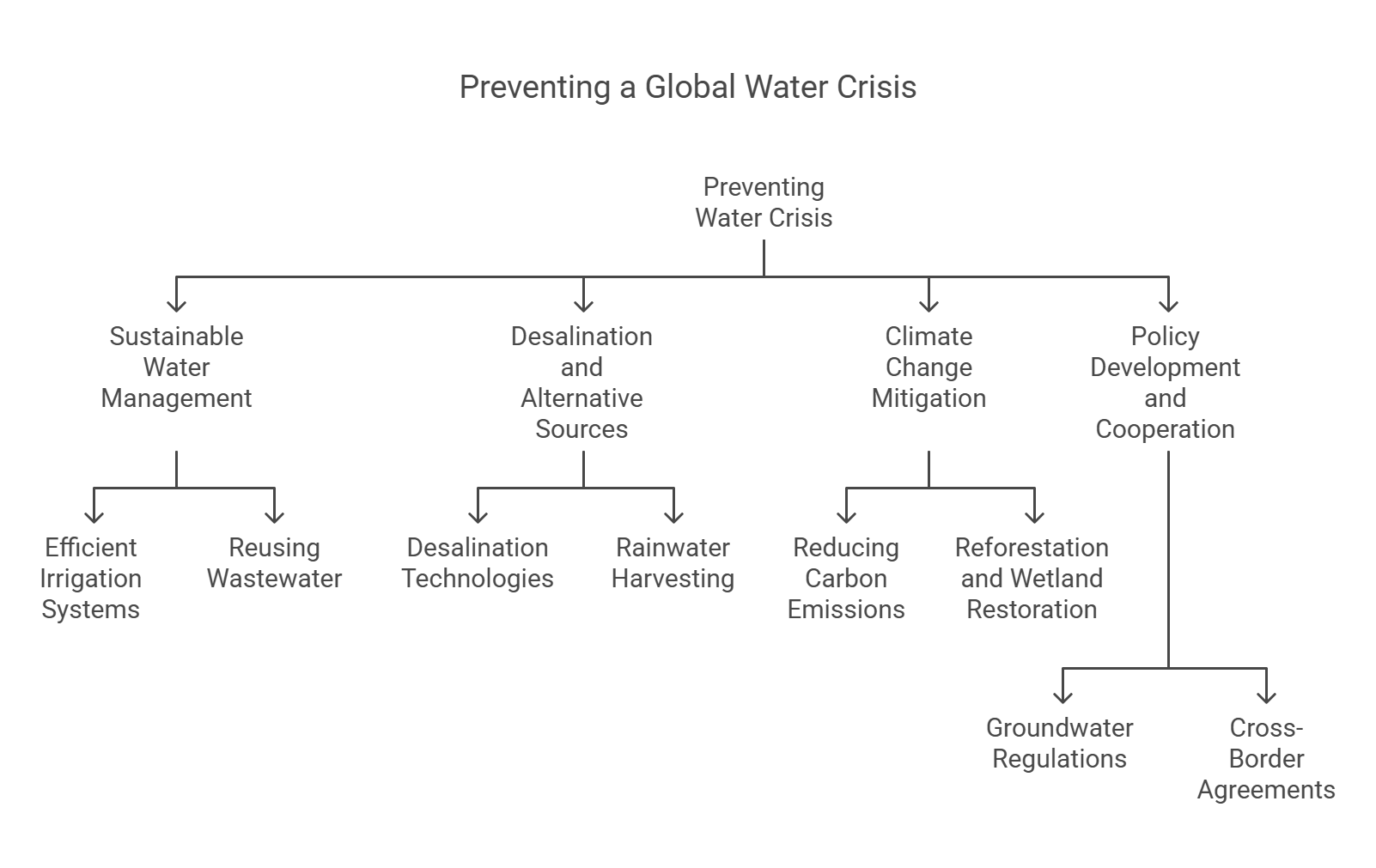
Sustainable Water Management
In order to minimize waste and provide fair access, water resources must be managed effectively. Important strategies consist of:
- Adopting Efficient Irrigation Systems: Since agriculture uses a large amount of water worldwide, methods like drip and sprinkler irrigation can reduce water waste.
- Reusing and Recycling Wastewater: Reusing wastewater in urban areas and industrial activities can reduce the demand on freshwater resources. In areas that are water-stressed, this method is very beneficial.
Desalination and Alternative Water Sources
Exploring new water sources can supplement existing supplies, particularly in arid and semi-arid areas:
- Expanding Desalination Technologies: Scaling up desalination efforts, especially in regions such as the Middle East, can provide reliable freshwater from seawater, despite its energy demands.
- Rainwater Harvesting and Cloud Seeding: Promoting rainwater collection systems and exploring cloud seeding technologies can enhance water availability, especially during dry seasons.
Climate Change Mitigation
Addressing climate change is critical to stabilizing water cycles and preventing future shortages:
- Reducing Carbon Emissions: Global efforts to cut greenhouse gas emissions can help stabilize climate patterns, thereby reducing the intensity of droughts and floods.
- Investing in Reforestation and Wetland Restoration: These actions not only sequester carbon but also improve natural water retention, supporting aquifer recharge and biodiversity conservation.
Policy Development and International Cooperation
Effective governance and global collaboration are crucial to ensuring sustainable water use:
- Groundwater Extraction Regulations: Governments must implement strict policies to monitor and regulate groundwater extraction and control pollution of water bodies.
- Cross-Border Water Agreements: Collaborative frameworks among nations sharing water resources can help prevent conflicts and promote equitable distribution, ensuring long-term access for all stakeholders.
Conclusion: The Time to Act is Now
The water crisis is not a distant threat—it is already unfolding. By 2050, the interplay of climate change, population growth, and unsustainable practices will push many regions to their limits. However, with collective action, innovation, and sustainable practices, we can avert the worst outcomes. Governments, industries, and individuals must prioritize water conservation, invest in resilient infrastructure, and foster international cooperation. The future of water and agriculture depends on the choices we make today. Let us act now to ensure a secure, water-abundant future for generations to come.
(Source: World Resources Institute)

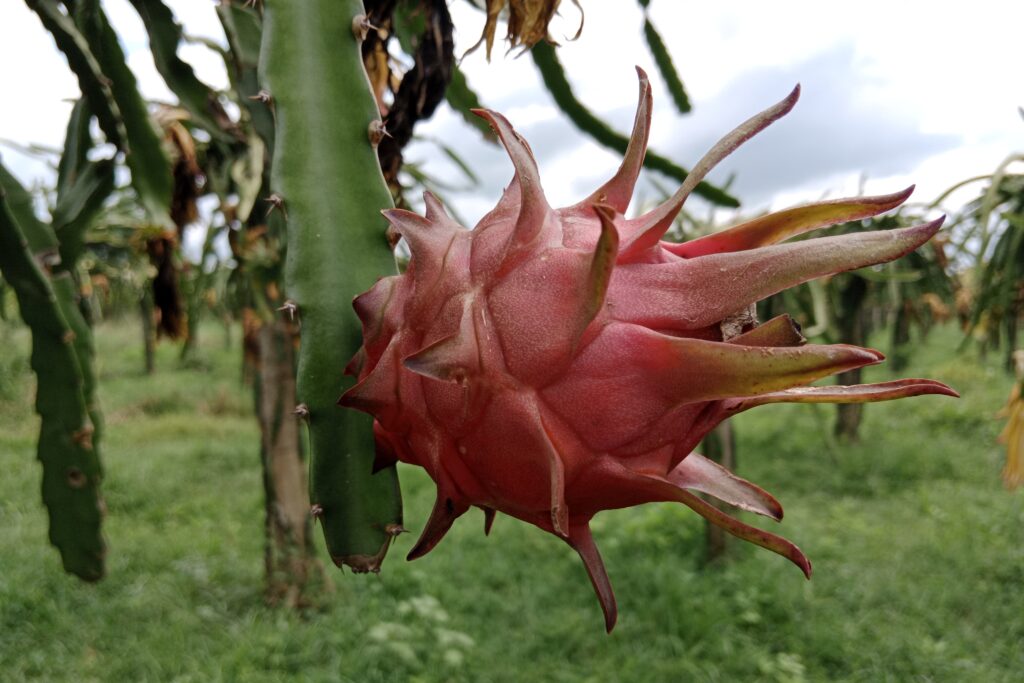
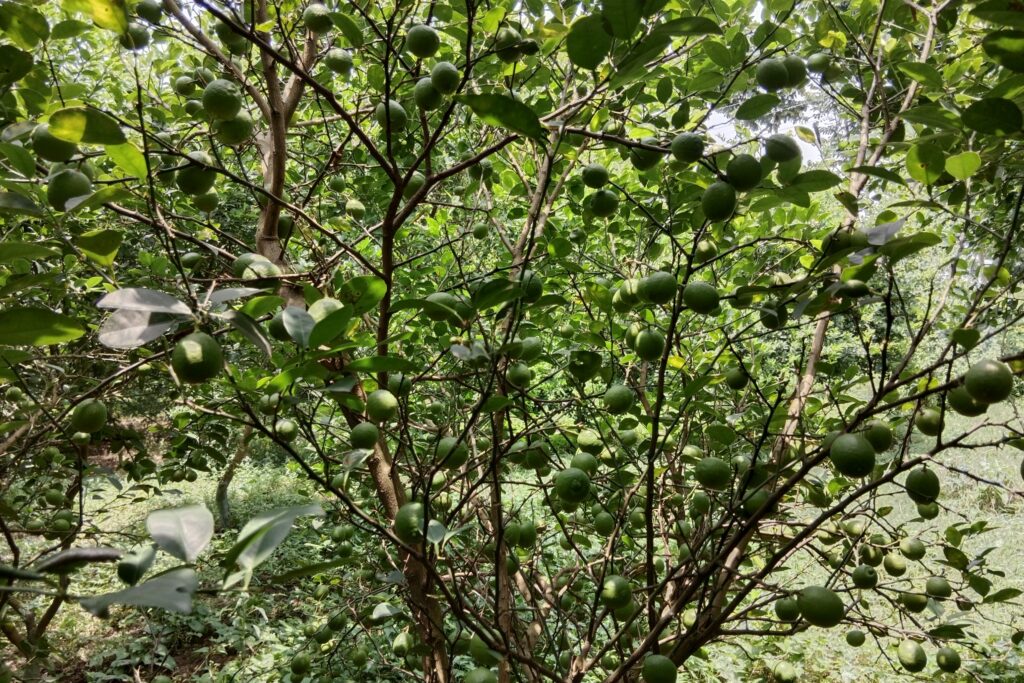
Pingback: What is the Future of Food in 2050? -